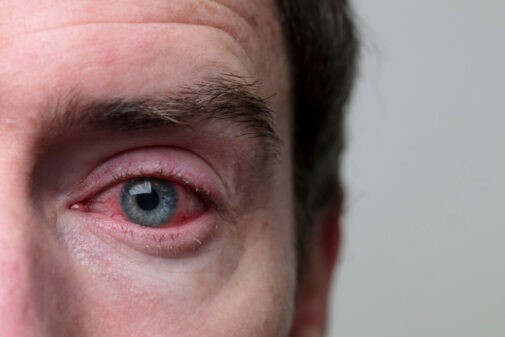A Common, Contagious Infection That May Require Treatment
 Your eyes sealed shut with a crusty residue is not exactly how you want to start your morning. However, this is a common occurrence when you have a pink eye infection, or conjunctivitis.
Your eyes sealed shut with a crusty residue is not exactly how you want to start your morning. However, this is a common occurrence when you have a pink eye infection, or conjunctivitis.
The infection impacts millions of adults and children each year.
“Pink eye is inflammation of the conjunctiva, or the membrane that covers the whites of your eyes,” says Dr. Jennifer George, a family medicine physician at Aurora Health Care. “There are multiple types of pink eye – viral and bacterial are extremely common.”
Common pink eye symptoms
- Eye redness
- Itching or burning eyes
- Watery discharge, sometimes crusting overnight
- Light sensitivity
- Swollen eyelids
- Blurred vision
- Mild eye pain
Symptoms can last for days to weeks depending on the type of pink eye.
How it’s spread
You may contract pink eye from close contact with a person who has an upper respiratory tract infection.
“It’s important to prevent spreading the highly infectious condition to others by practicing proper hand hygiene, staying home from work or school, and not sharing anything that goes near your eye,” says Dr. George. “This includes towels, pillows, makeup and eye drops.”
It’s also possible to have a non-infectious case. This includes allergic pink eye, exposure to irritants, a foreign object in the eye or injury. To prevent this type of pink eye, avoid irritants, such as smoke and dust, and flush foreign objects out of your eye with clean water.
Treatment
If you think you may have pink eye or your symptoms are getting worse, schedule an appointment with your provider. If you have bacterial pink eye, your doctor will prescribe an antibiotic eye drop.
“For non-bacterial pink eye, your provider can help recommend ways to improve the infection and accompanying respiratory or allergy-related symptoms,” explains Dr. George.
Dr. George says the following can help improve symptoms:
- Apply a cold compress to reduce swelling
- Avoid wearing contacts and makeup
- Apply a warm compress to remove dried discharge
- Use over-the-counter allergy drops and antihistamines, for allergic pink eye
- Reduce exposure to irritants
- Dispose of any recently used eye makeup to prevent re-infection
Article contributed by: Anna Kohler
Tags: #eyeinfection, #parishnurse, #pinkeye

Comments are closed here.